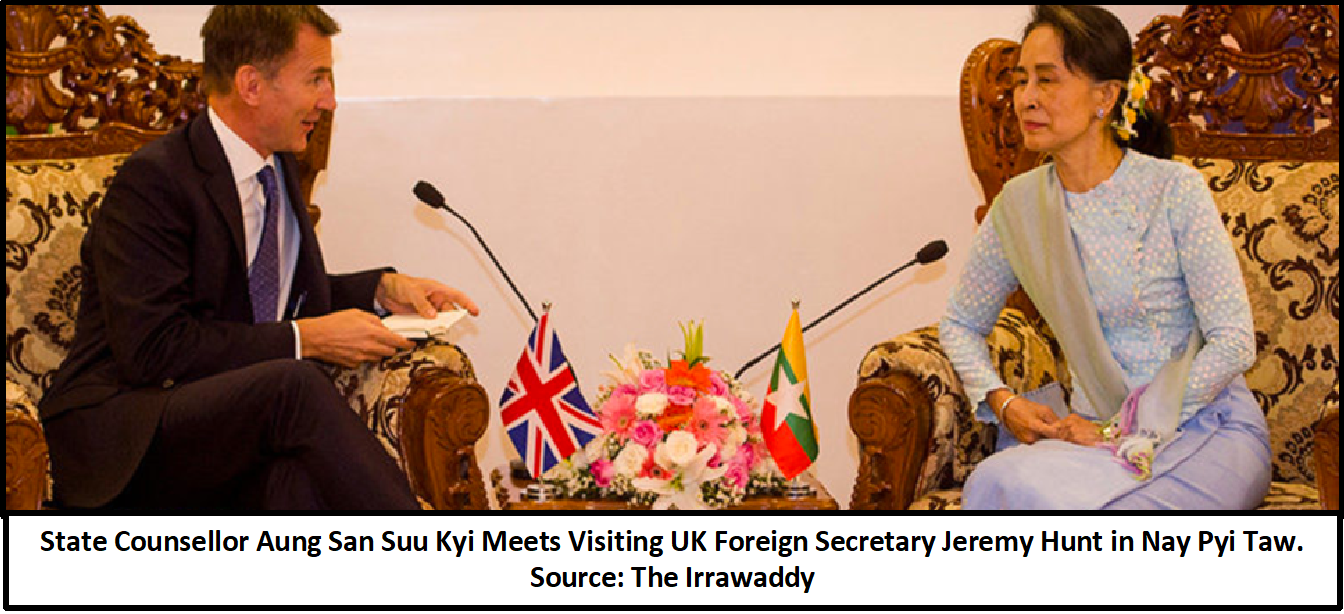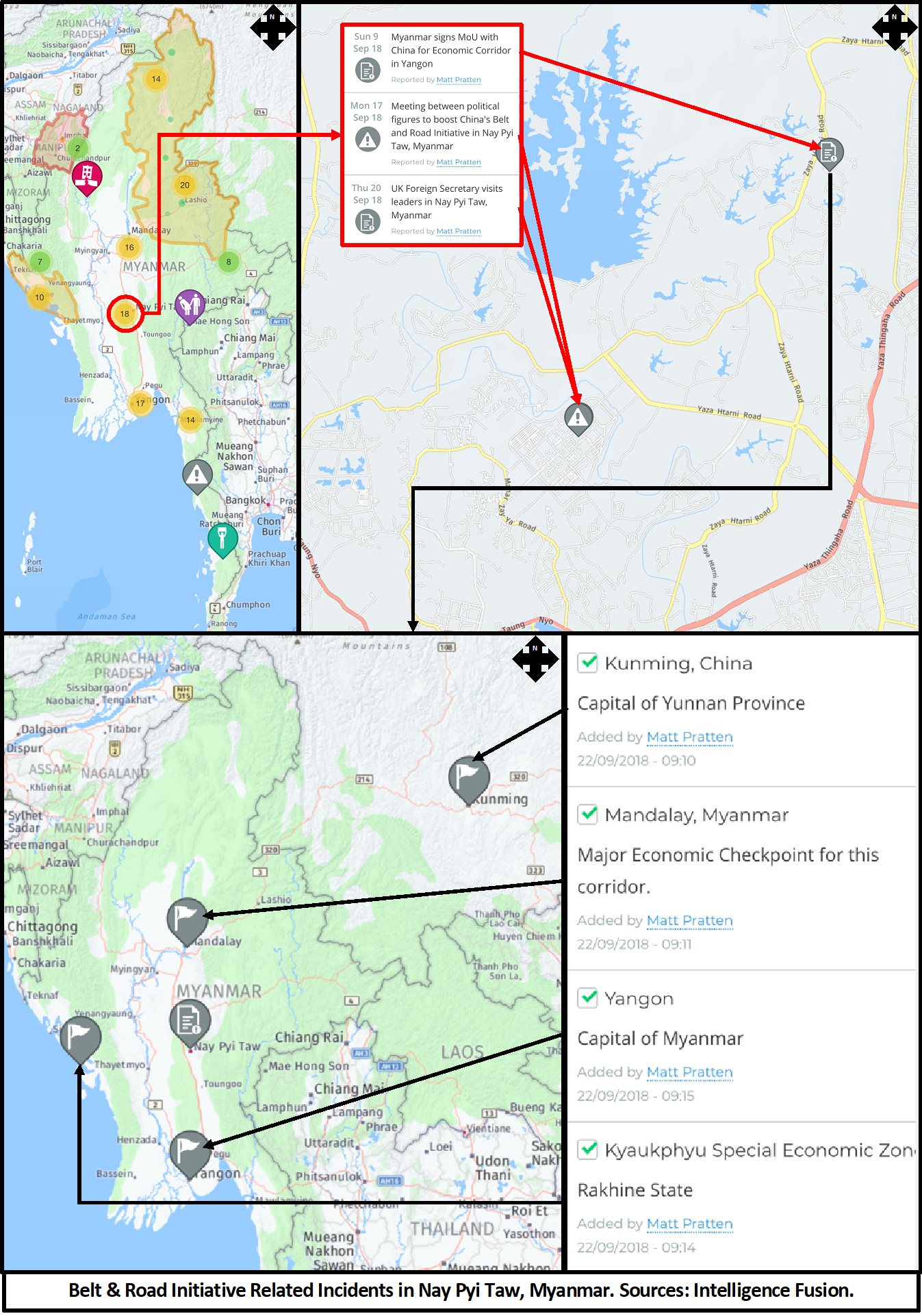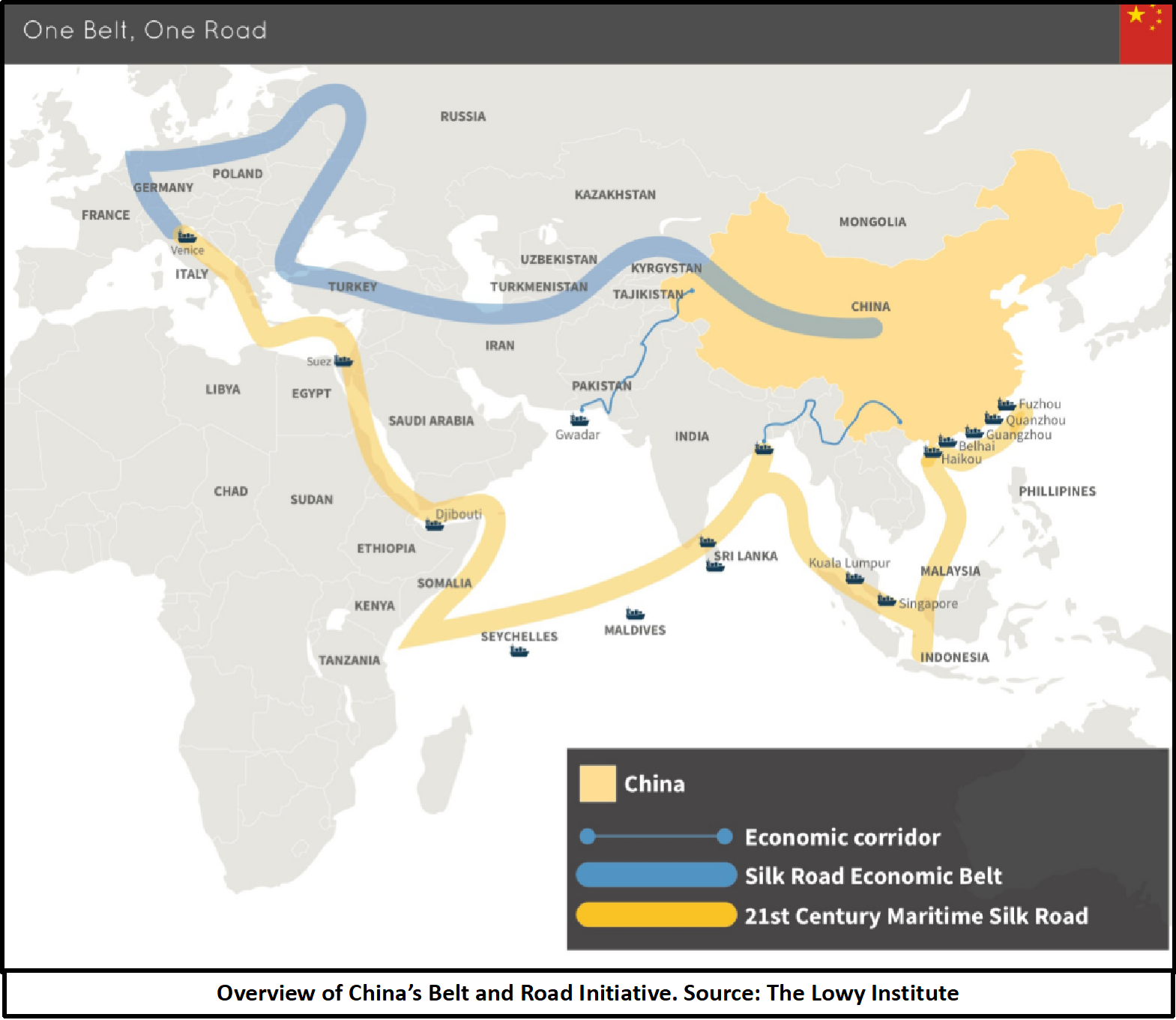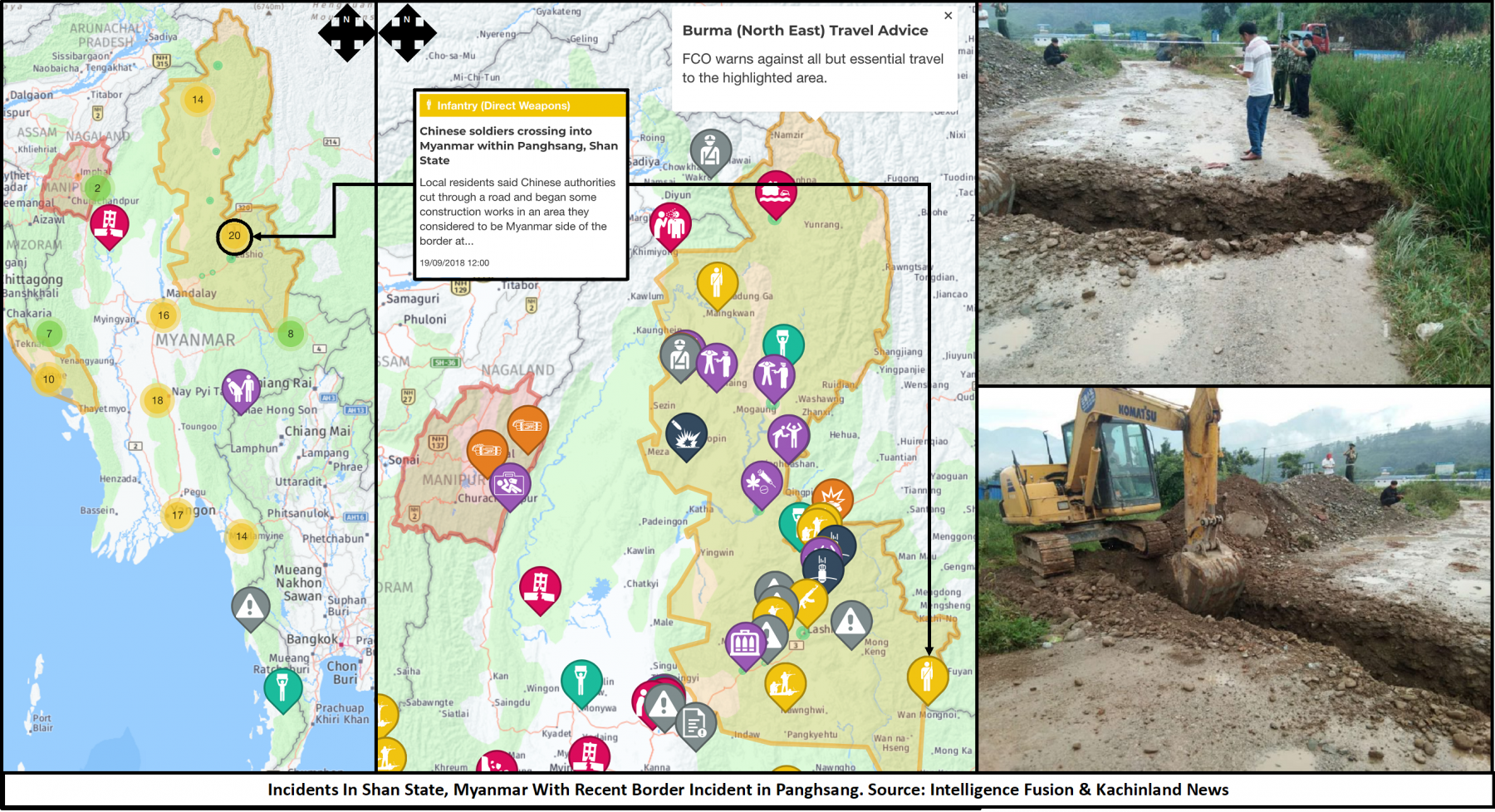The Effects of China’s Belt and Road Initiative in Myanmar
Date: 4 October 2018
EXECUTIVE SUMMARY
While there has only been one incident recorded, there is POTENTIAL the Chinese will conduct further crossings into Myanmar from its border in order to achieve its goals for its Belt and Road Initiative. The strategic goals for China’s Belt and Road Initiative will POTENITALLY mean the Chinese will cross into Shan State and other areas of Northern Myanmar where there is ongoing conflict between the Tatmadaw and those within the FPNCC.
INTRODUCTION
This Intelligence Report on Myanmar is intended to analyse what has been happening within the country in terms of threats which are tracked by Intelligence Fusion; those being threats of Direct Weapons, Suicide/Complex Attacks, Indirect Weapons, Air, Maritime, Grenades, Protests, Criminality, Hazards and Other. This report aims to provide analysis in terms of the following Intelligence Requirements:
- What threats exist in Myanmar?
- How do these threats continue to exist?
- What are the issues behind these threats?
- What significant events will affect the country’s situation and threats?
Monitoring of Open Sources relating to Myanmar has featured continuous focus from Western countries about the situation surrounding the treatment of the Rohingya within Rakhine State. During his recent visit to the country, British Foreign Secretary Jeremy Hunt stated the international community should consider referring the treatment of Rohingya in Myanmar to the ICC unless those responsible are tried and held accountable in the country. Similar sentiments are being voiced by European states and the United States. While this criticism has been occurring, the Chinese have been taking a much different approach and appear to be capitalising on the animosity for its Belt and Road Initiative (Lintner 2018; Reuters 2018).

Incidents logged in Myanmar have shown that on 09 SEP 2018, Myanmar has signed an MoU with China agreeing to establish the CMEC, part of China’s Belt and Road Initiative. The agreement was signed by Myanmar’s Minister of Planning and Finance U Soe Win and He Lifeng, Chairman of the NDRC; China’s top economic planning agency. The aim is to construct basic infrastructure across key economic centres in Myanmar. As shown in the imagery below, the CMEC is an estimated 1,700-kilometer-long corridor that will connect Kunming in Yunnan Province, to Myanmar’s major economic checkpoints in Mandalay, Yangon and to the Kyaukphyu Special Economic Zone SEZ (McCabe & Harrington 2018).

Additionally, on 17 SEP 2018 the Vice Chairman of the Standing Committee of China’s National People’s Congress Ding Zhongli met with Myanmar’s Speaker of the House of Nationalities U Mann Win Khaing Than at the Union Parliament, Nay Pyi Taw. Reporting of this meeting indicates the purpose was to boost the cooperation between Myanmar and China in its Belt and Road Initiative (McCabe & Harrington 2018).
COMMENT. The Belt and Road Initiative is among Chinese President Xi Jinping’s most ambitious foreign policy projects. Unveiled in 2013, it is also known as the Silk Road Economic Belt and the 21st-Century Maritime Silk Road. Displayed below, the project aims to build a network of roads, railroads and shipping lanes linking at least 70 countries from China to Europe passing through Central Asia, the Middle East and Russia, fostering trade and investment and in turn bolstering China’s political leverage in Asia. Myanmar occupies a unique geographical position in the BRI, lying at the junction of South Asia and Southeast Asia, and between the Indian Ocean and southwestern China’s landlocked Yunnan province. China is Myanmar’s top investment partner. China invested US$20.01 billion between 1988 and May of this year (Lwin 2018; Cai 2017). COMMENT ENDS.

Further Open Source reporting coming from Myanmar has indicated effects of these developments on the ground. On 19 SEP 2018 at Hpai Kawng village in Panghsang / Pangsai – a town located on the border with China – local residents claimed Chinese authorities cut through a road and began some construction works on Myanmar’s side of the border. Available reporting indicates a resident confronted the Chinese soldiers about their activities; one soldier replied that they considered it Chinese side (Kachinland News 2018; McCabe & Harrington 2018).

COMMENT. This incident occurred in an area that sits between Kunming and Mandalay where there is ongoing armed conflict between Myanmar’s Army – the Tatmadaw – and several EAGs; it is an area where all but essential travel is strongly advised against. The largest of these EAGs is the UWSA. It is among the largest drug trafficking groups in Southeast Asia; known internationally for its trade in opium, heroin and amphetamines. It is the main supplier of drugs to China, Thailand & India. This trade allows the group to continue its operations against the Myanmar government. Profits from the trade allow them to purchase weapons and pay their personnel. Active within Shan State in the North East of Myanmar, the UWSA is one the several EAGs within Myanmar and is made up of an estimated 30,000 personnel; acting as the military wing of the United Wa State Party. With backing from the Chinese government, the UWSA well-equipped, well-organised, deployed along Myanmar’s borders with Thailand and China (Pratten et al. 2018).
With the ongoing conflicts between the FPNCC and the Tatmadaw, the Chinese would have the opportunity to encroach on territories it wants to control in order to achieve its goals for its Belt and Road Initiative. However, future entrances into this part of Myanmar could bring Chinese forces into contact with the Tatmadaw and forces under the FPNCC. An additional force in this part of Myanmar would raise the possibility of worsening an already violent situation. COMMENT ENDS.
ASSESSMENT
| POTENTIAL/POTENTIALLY | POSSIBLE/POSSIBLY | PROBABLE/PROBABLY | CONFIRMED |
| Less than 50% chance | 50% chance or greater | 75% chance or greater | 95% chance or greater |
While there has only been one incident recorded so far, there is POTENTIAL the Chinese will conduct further crossings into Myanmar from its border in order to achieve its goals for its Belt and Road Initiative. The strategic goals for China’s Belt and Road Initiative will POTENITALLY mean the Chinese will cross into Shan State and other areas of Northern Myanmar where there is ongoing conflict between the Tatmadaw and those within the FPNCC.
At the tactical level, these clashes occurring in these areas provide a POTENTIAL cover for Chinese to encroach into Myanmar but there is also POTENTIAL for Chinese forces to come into contact with Tatmadaw forces and FPNCC forces, exacerbating an already violent situation within Northern Myanmar. This will PROBABLY see this part of Myanmar remain as an area where non-essential travel is advised against.
ACRONYMS
- CMEC – China-Myanmar Economic Corridor
- EAG – Ethnic Armed Groups
- FPNCC – Federal Political Negotiation and Consultative Committee
- ICC – International Criminal Court
- MoU – Memorandum of Understanding
- NDRC – National Development and Reform Commission
- SEZ – Special Economic Zone
- UWSA – United Wa State Army
REFERENCES
Cai, P 2017, ‘Understanding China’s Belt and Road Initiative’, The Lowy Institute for International Policy, retrieved October 4, 2018, from <https://www.lowyinstitute.org/sites/default/files/documents/Understanding%20China%E2%80%99s%20Belt%20and%20Road%20Initiative_WEB_1.pdf>.
Kachinland News 2018, ‘Locals express concern over Chinese authorities’ construction works’, Kachinland News, retrieved October 4, 2018, from <http://www.kachinlandnews.com/?p=29185>.
Lintner, B 2018, ‘As West recoils, China surges south in Myanmar’, Asia Times, retrieved October 4, 2018, from <http://www.atimes.com/article/as-west-recoils-china-surges-south-in-myanmar/>.
Lwin, N 2018, ‘Government Signs MoU with Beijing to Build China-Myanmar Economic Corridor’, The Irrawaddy, retrieved October 4, 2018, from <https://www.irrawaddy.com/news/burma/govt-signs-mou-beijing-build-china-myanmar-economic-corridor.html>.
McCabe, M & Harrington, D 2018, ‘Intelligence Fusion Platform – Asia’, Intelligence Fusion Platform, retrieved October 4, 2018, from <https://www.intelligencefusion.co.uk/>.
PRATTEN M, McCabe, M, Harrington, D & Brown, L 2018, ‘Myanmar’s Armed Conflict Threatens to Cross into Northern Thailand’, Intelligence Fusion, retrieved October 1, 2018, from <https://www.intelligencefusion.co.uk/blog/myanmar-s-armed-conflict-threatens-to-cross-into-northern-thailand>.
Reuters 2018, ‘U.K. Says Myanmar May Need to Be Referred to ICC over Rohingya’, The Irrawaddy, retrieved October 4, 2018, from <https://www.irrawaddy.com/news/u-k-says-myanmar-may-need-referred-icc-rohingya.html>.

